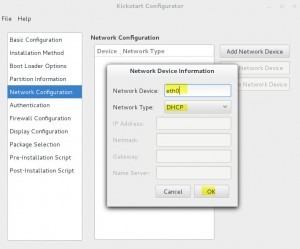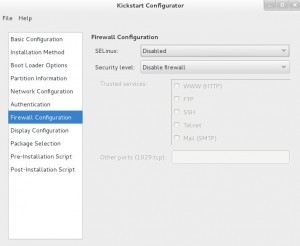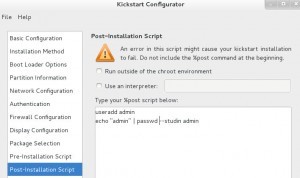PXE Boot server configuration step by step Guide
Preboot execution Environment (PXE Boot, sometimes pronounced as pixie) specification describes a standardized client-server environment that boots a software assembly, retrieved from a network, on PXE-enabled clients. On the client side it requires only a PXE-capable network interface controller (NIC), and uses a small set of industry-standard network protocols such as DHCP and TFTP.
The concept behind the PXE originated in the early days of protocols like BOOTP/DHCP/TFTP, and as of 2015 it forms part of the Unified Extensible Firmware Interface (UEFI) standard. Given fast and reliable local area networks (LANs), PXE is the most frequent choice for operating system booting, installation and deployment.
Assume if there is no PXE Boot server we have to have more OS CD/DVD’s to install multiple clients and require manual intervention to configure partitions, software packages users creation so an.
PXE Boot is very useful when we looking to re-image / install more clients yet a time.
Server OS – RHEL 7 / Centos 7
Note: Observe carefully and do not miss even single character of config files, which may result un-successful PXE Boot Server.
PXE Boot Advantages :
- No need to carry Installation media all the times
- Less manual intervention required
- No need to monitor installation process
Let’s see the procedure how to configure PXE Boot server
Step 1: Assign static IP address to PXE Boot Server
using below command we can assign static IP address to server in RHEL7 / Centos 7
[root@Ark-PXEBootServer ~]# nmcli connection modify eno16777736 ipv4.addresses 192.168.4.13/24 ipv4.gateway 192.168.4.2 ipv4.dns 192.168.4.12 ipv4.method manual connection.autoconnect yes
Bring down and bring up interface connection to reflect changes OR restart network service systemctl restart network.service
[root@Ark-PXEBootServer ~]# nmcli connection show NAME UUID TYPE DEVICE eno16777736 c3d606c9-1e71-4c62-8280-7b2380d11b97 802-3-ethernet eno16777736 [root@Ark-PXEBootServer ~]# nmcli connection down eno16777736 [root@Ark-PXEBootServer ~]# ip a
Step 2: Install FTP server and copy OS CD / DVD content to FTP path
mount the installation media to your server and copy the total content to FTP path
[root@Ark-PXEBootServer ~]# mount /dev/sr0 /run/media/root/ [root@Ark-PXEBootServer ~]# rpm -ivh /run/media/root/RHEL-7.1\ Server.x86_64/Packages/vsftpd-3.0.2-9.el7.x86_64.rpm [root@Ark-PXEBootServer ~]# cd /run/media/root/RHEL-7.1\ Server.x86_64/ [root@Ark-PXEBootServer ~]# cp -Rvf * /var/ftp/pub/ Now create an YUM server using copied packages [root@Ark-PXEBootServer ~]# cd /etc/yum.repos.d/ [root@Ark-PXEBootServer ~]# vim localyum.repo [localyum] name=local yum server baseurl=file:///var/ftp/pub/ enable=1 gpgcheck=0 :wq (Save & Exit) [root@Ark-PXEBootServer ~]# cd /var/ftp/pub/repodata/ [root@Ark-PXEBootServer ~]# cp 527a8b3063d516bd9d4cf33ebf5f8c5a0e83fecb48babbb9e84c7c573004b3f4-comps-Server.x86_64.xml /var/ftp/pub/comps-Server.x86_64.xml [root@Ark-PXEBootServer ~]# rpm -ivh /var/ftp/pub/Packages/createrepo-0.9.9-23.el7.noarch.rpm [root@Ark-PXEBootServer ~]# createrepo -vg /var/ftp/pub/comps-Server.x86_64.xml /var/ftp/pub/ [root@Ark-PXEBootServer ~]# yum grouplist
Step 3: Install and configure httpd / Apache / Web server
Install required packages and point the copied packages to web server default location. Permit SeLinux.
[root@Ark-PXEBootServer ~]# yum install httpd system-config-kickstart -y [root@Ark-PXEBootServer ~]# ln -s /var/ftp/pub/ /var/www/html/ [root@Ark-PXEBootServer ~]# systemctl restart vsftpd.service [root@Ark-PXEBootServer ~]# systemctl status vsftpd.service [root@Ark-PXEBootServer ~]# systemctl enable vsftpd.service [root@Ark-PXEBootServer ~]# systemctl restart httpd.service [root@Ark-PXEBootServer ~]# systemctl status httpd.service [root@Ark-PXEBootServer ~]# systemctl enable httpd.service [root@Ark-PXEBootServer ~]# restorecon -Rvf /var/www/html/ [root@Ark-PXEBootServer ~]# restorecon -Rvf /var/ftp/pub/ [root@Ark-PXEBootServer ~]# systemctl restart vsftpd.service [root@Ark-PXEBootServer ~]# systemctl restart httpd.service
Step 4: Generate unattended configuration file
To generate un-attended configuration file we have to use kickstart config tool
Required GUI to launch this tool
Login to your server using GUI support and run below command
[root@Ark-PXEBootServer ~]# system-config-kickstart
as shown in above screen select system language, keyboard language and root password
provide IP address and location of your DVD content path
Select install new boot loader
Select Clear Master boot Record and Click on Add
Add paritions ” /, /boot and swap” by repeating Add button
Click on Add Network Device and provide Network device name and Type
Authentication tab no need select anything leave it as it is
Select the option if you want enable Firewall configuration after the client installation
in this GUI tool there is no option to include packages, we have to add them by manually
in Post installation Script if you want to execute any script after the installation you can include them
Save the file to /var/ftp/pub/ location
Now edit the configuration file and add packages list to that config file
we can make use of anaconda-ks.cfg file add blod characters to your /var/ftp/pub/auto.cfg file
[root@ldapclient1 pub]# vim /var/ftp/pub/auto.cfg #platform=x86, AMD64, or Intel EM64T #version=DEVEL # Install OS instead of upgrade install # Keyboard layouts keyboard 'us'# Reboot after installation reboot # Root password rootpw --iscrypted $1$AWgTZ0t6$q/EdV2HgySO.sNxekJdEb. # System timezone timezone Asia/Kolkata # Use network installation url --url="http://192.168.4.13/pub" # System language lang en_US # Firewall configuration firewall --disabled # Network information network --bootproto=dhcp --device=eth0 # System authorization information auth --useshadow --passalgo=sha512 # Use graphical install graphical firstboot --disable # SELinux configuration selinux --enforcing # System bootloader configuration bootloader --location=mbr # Clear the Master Boot Record zerombr # Partition clearing information clearpart --all # Disk partitioning information part /boot --fstype="xfs" --size=200 part / --fstype="xfs" --size=10000 part swap --fstype="swap" --size=2000 %packages @base @compat-libraries @core @desktop-debugging @dial-up @fonts @gnome-desktop @guest-agents @guest-desktop-agents @input-methods @internet-browser @multimedia @print-client @x11 chrony kexec-tools kexec-tools %end %post useradd ravi echo "ravi" |passwd --studin redhat %end
Step 5: Install and configure tftp Server and DHCP server
Xinetd listens for incoming requests over a network and launches the appropriate service for that request
DHCP – Dynamic Host Configuration Protocol – to assign automatic IP address to PXE Boot client
Trivial File Transfer Protocol (TFTP) is a simple, lockstep, File Transfer Protocol which allows a client to get from or put a file onto a remote host. One of its primary uses is in the early stages of nodes booting from a local area network. TFTP has been used for this application because it is very simple to implement
[root@Ark-PXEBootServer ~]# yum install syslinux xinetd tftp-server dhcp -y [root@Ark-PXEBootServer ~]# mkdir /var/lib/tftpboot/pxelinux.cfg [root@Ark-PXEBootServer ~]# cp /usr/share/syslinux/pxelinux.0 /var/lib/tftpboot/
Enable TFTP service to run under the xinetd service
[root@Ark-PXEBootServer ~]# vim /etc/xinetd.d/tftp
[root@Ark-PXEBootServer ~]# cat /etc/xinetd.d/tftp
# default: off
# description: The tftp server serves files using the trivial file transfer \
# protocol. The tftp protocol is often used to boot diskless \
# workstations, download configuration files to network-aware printers, \
# and to start the installation process for some operating systems.
service tftp
{
socket_type = dgram
protocol = udp
wait = yes
user = root
server = /usr/sbin/in.tftpd
server_args = -s /var/lib/tftpboot
disable = no
per_source = 11
cps = 100 2
flags = IPv4
}
[root@Ark-PXEBootServer ~]# systemctl restart xinetd.service
[root@Ark-PXEBootServer ~]# systemctl enable xinetd.service
Configure the DHCP server, below mentioned configuration we have to modify in dhcp configuration file. (block and Bold characters)
[root@Ark-PXEBootServer ~]# cp /usr/share/doc/dhcp-4.2.5/dhcpd.conf.example /etc/dhcp/dhcpd.conf
cp: overwrite ‘/etc/dhcp/dhcpd.conf’? y
[root@Ark-PXEBootServer ~]# vim /etc/dhcp/dhcpd.conf
################################ DHCP SERVER CONFIG START ############################
# dhcpd.conf
#
# Sample configuration file for ISC dhcpd
#
Allow booting;
Allow bootp;
authoritative;
# option definitions common to all supported networks...
option domain-name "example.org";
option domain-name-servers ns1.example.org, ns2.example.org;
default-lease-time 600;
max-lease-time 7200;
# Use this to enble / disable dynamic dns updates globally.
#ddns-update-style none;
# If this DHCP server is the official DHCP server for the local
# network, the authoritative directive should be uncommented.
#authoritative;
# Use this to send dhcp log messages to a different log file (you also
# have to hack syslog.conf to complete the redirection).
log-facility local7;
# No service will be given on this subnet, but declaring it helps the
# DHCP server to understand the network topology.
subnet 10.152.187.0 netmask 255.255.255.0 {
}
# This is a very basic subnet declaration.
subnet 192.168.4.0 netmask 255.255.255.0 {
range 192.168.4.1 192.168.4.50;
option routers 192.168.4.13;
default-lease-time 21600;
max-lease-time 43200;
}
# This declaration allows BOOTP clients to get dynamic addresses,
# which we don't really recommend.
subnet 192.168.4.0 netmask 255.255.255.0 {
range dynamic-bootp 192.168.4.101 192.168.4.200;
option broadcast-address 192.168.4.255;
option routers 192.168.4.13;
option domain-name "arkit.co.in";
option domain-name-servers 192.168.4.12;
default-lease-time 21600;
max-lease-time 43200;
filename "pxelinux.0";
next-server 192.168.4.13;
}
###################### DHCP SERVER CONFIG FILE ############################
Verify the dhcp configuration and restart the service
[root@Ark-PXEBootServer ~]# dhcpd configtest [root@Ark-PXEBootServer ~]# systemctl restart dhcpd.service [root@Ark-PXEBootServer ~]# systemctl status dhcpd.service
Step 6: Configure boot menu and image for remote PXE Boot client
Configure and design the boot menu, this menu is visible yet the client side
[root@Ark-PXEBootServer ~]# cd /var/ftp/pub/images/pxeboot/
[root@Ark-PXEBootServer pxeboot]# cp initrd.img vmlinuz /var/lib/tftpboot/
[root@Ark-PXEBootServer pxeboot]# cp /usr/share/syslinux/menu.c32 /var/lib/tftpboot/
[root@Ark-PXEBootServer isolinux]# cd /var/ftp/pub/isolinux/
[root@Ark-PXEBootServer isolinux]# cp -rvf * /var/lib/tftpboot/
[root@Ark-PXEBootServer isolinux]# vim /var/lib/tftpboot/pxelinux.cfg/default
[root@Ark-PXEBootServer isolinux]# cat /var/lib/tftpboot/pxelinux.cfg/default
default vesamenu.c32
timeout 600
display boot.msg
menu background splash.jpg
menu title Welcome to the RHEL 7 PXE Installation!
label local
menu label boot from ^local drive
menu default
localboot 0xffff
label ws
menu label Unattend Installation of RHEL7
kernel vmlinuz
append biosdevname=0 ksdevice=link load_ramdisk=1 initrd=initrd.img network ks=http://192.168.4.13/pub/auto.cfg noipv6
label si
menu label RHEL 7 ^Standard Installation
kernel vmlinuz
append biosdevname=0 ksdevice=link load_ramdisk=1 initrd=initrd.img
[root@Ark-PXEBootServer isolinux]# systemctl restart xinetd
[root@Ark-PXEBootServer isolinux] systemctl status xinetd
Step 7: Enable firewall ports
Enable ftp, dhcp, http, nfs and 4011 port from firewall
[root@ldapclient1 ~]# firewall-cmd --permanent --add-service=ftp success [root@ldapclient1 ~]# firewall-cmd --permanent --add-service=tftp success [root@ldapclient1 ~]$ firewall-cmd --permanent --add-service=dhcp success [root@ldapclient1 ~]# firewall-cmd --permanent --add-service=nfs success [root@ldapclient1 ~]$ firewall-cmd --permanent --add-port=4011/tcp success [root@ldapclient1 ~]# firewall-cmd --reload success
That’s it. PXE Boot server is configured successfully
Go to Client and and boot the client using PXE
Client is getting the IP address from DHCP server
Boot menu. Select the appropriate option and hit enter
Please write your valuable feedback
Related Articles
Centos Operating system Topics
DNS Server RHEL 7 Step by Step Guide
Thanks for your wonderful Support and Encouragement
- Get Email | Download E-Books
- Facebook Page
- Youtube Channel
- Exclusive Telegram Group
- Discuss On WhatsApp Group




















I’m getting error while trying to install rhel 7 in my virtual box. dracut-initq[587] warning: no suitable images, could not boot
You need to edit the path with level have(before booting, select the rhel7 option in list, hit ‘e’ to pass custom flags) and edit it add the label = osdisk or whatever
thank you the tutorial is clear I shall like whether you want to install Windows client what we will change
HI , how to deploy Windows os in this default.cfg plz guide me…
Hi, DHCP gets the wrong ip address,
First time itseems gets the right IP, any fault with my dhcp configuration?
Jan 18 02:39:24 rhel7m dhcpd: DHCPDISCOVER from 00:0c:29:ae:dd:83 via eno16777736
Jan 18 02:39:25 rhel7m dhcpd: DHCPOFFER on 192.168.5.10 to 00:0c:29:ae:dd:83 via eno16777736
Jan 18 02:39:26 rhel7m dhcpd: DHCPREQUEST for 192.168.5.10 (192.168.5.111) from 00:0c:29:ae:dd:83 via eno16777736
Jan 18 02:39:26 rhel7m dhcpd: DHCPACK on 192.168.5.10 to 00:0c:29:ae:dd:83 via eno16777736
Jan 18 02:39:26 rhel7m in.tftpd[2912]: tftp: client does not accept options
Jan 18 02:39:35 rhel7m dhcpd: DHCPDISCOVER from 00:0c:29:ae:dd:83 via eno16777736
Jan 18 02:39:35 rhel7m dhcpd: DHCPOFFER on 192.168.5.10 to 00:0c:29:ae:dd:83 via eno16777736
Jan 18 02:39:35 rhel7m dhcpd: DHCPREQUEST for 192.168.130.128 (192.168.130.254) from 00:0c:29:ae:dd:83 via eno16777736: wrong network.
Jan 18 02:39:35 rhel7m dhcpd: DHCPNAK on 192.168.130.128 to 00:0c:29:ae:dd:83 via eno16777736
Use dhcp configuration check command and know whether it is configured correctly or not.
Nice tutorial , but how l can add multiple linux distro , for example ubuntu 16 ?
Hi,
after os installation done via pxe on network machine, it only show a black screen with a “-” sign on lest top.
Is the Image file is correct what you have prepared and is the hardware is supported for Linux Operating system.?
thanks very nice
mark
Failed to start switch Root.
Warning: /dev/root does not exist